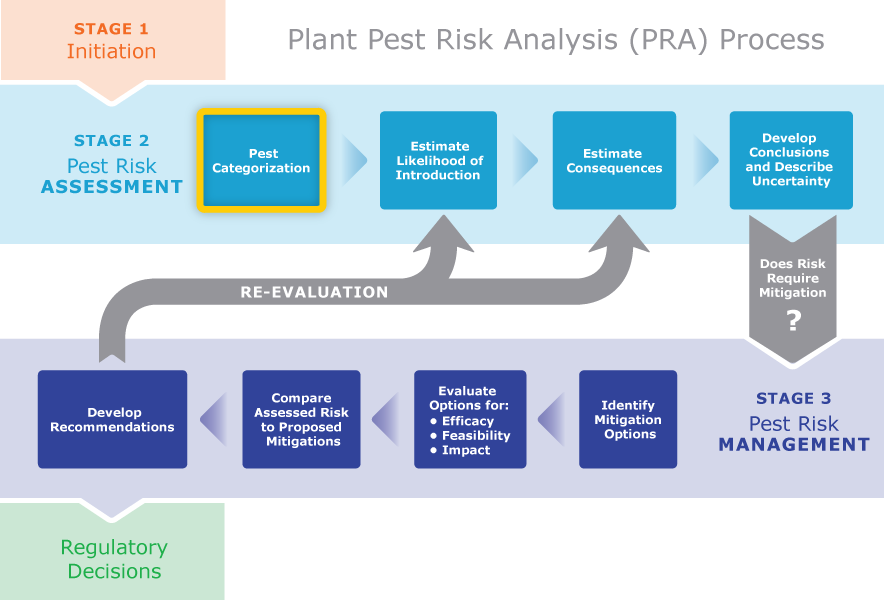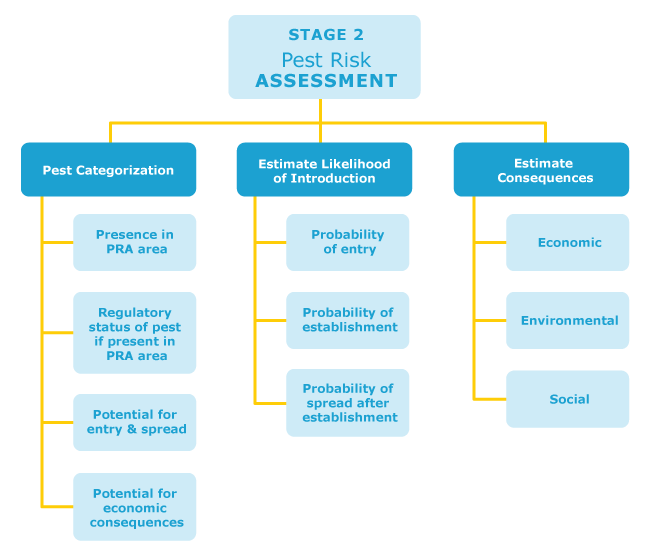Lesson 4: Practice
Topic 2: Cukozinni Case Study Continued
Stage 2: Pest Risk Assessment
After examining the most relevant information you can find about importing cukozinni fruit from Exportland, you are ready to perform a pest risk assessment.
In an organism PRA, you assess the pest risk for a single pest. But in a pathway PRA, you must complete a pest risk assessment for each pest identified to follow the pathway. This means assessing the risk associated with each of the three pests associated with the movement of cukozinni fruit: Pestis horribilis, Rosun delapidus, and Funjos dampner.
Recall that Stage 2 of a pathway PRA begins with three steps:
- Pest categorization
- Estimate likelihood of introduction
- Estimate economic consequences
After completing these three steps, you must summarize your findings with the fourth step by:
- Developing conclusions and describing uncertainty regarding the information gathered from the first three steps.

Pest Categorization
In the initiation stage, you identified three pests of cukozinni from Exportland. Now you must determine which of these pests meet the criteria for a quarantine pest in Importland.
Your answers to the following questions about each pest will help you determine whether that pest should be a quarantine pest. Your answers will also tell you whether or not to continue performing the PRA.

Now, using the diagram above, try an evaluation of whether or not to perform PRA.
You have determined Pestis horribilis is a quarantine pest and should be monitored. Now evaluate the remaining two pests by asking yourself the same questions.
Only Pestis horribilis should be considered a quarantine pest at this time. You recently completed a pest risk assessment for this pest, so you do not need to continue with a pathway PRA. However, for practice purposes, let us continue.
Answer the following question to review the next steps for a quarantine pest.
This example illustrating the initiation and pest risk assessment stages of a pathway PRA is simplified because you have only three organisms to analyze and only one is a quarantine pest. In reality, you might have to consider numerous organisms and many of them might be quarantine pests. You would have to assess each quarantine pest for probability of entry and spread and for potential economic consequences.
To continue, select Module Conclusion from the Lessons menu above or click here.